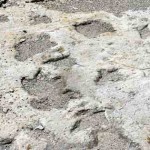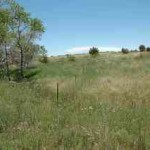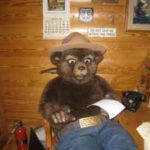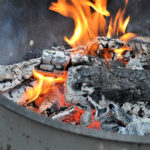Grass has been around a long time
We left the mountains of Arizona for the “Lone Prairie”, a..k.a. the rolling expanses of Rita Blanca, Kiowa, Black Kettle, and McClellan Creek national grasslands. Fred and I were exploring the differences, history, and beautiful landscapes.
Looking out across the vast expanse of prairie/grassland got me wondering just how did it all come to be. The opening line the Peterson Field Guide for The North American Prairie is: “Grass has been around for a long time, perhaps 50 or 60 million years. But the North American Prairie as we know it evolved quite recently.” Some say the Rocky Mountains which bound the prairie on the west, are between 100 and 200 million years old! The age of the Appalachian Mountains, the prairie’s eastern boundary, are said to be 450 million years. So, how could the prairie be so much young then the mountain ranges that surround it?
 As I understand it, 70 million years ago the area we explored was a warm swallow sea filled with carnivorous fish and multi-ton dinosaurs wandered along the sea’s marshy edge. About 65 million years ago, a geological event called the Rocky Mountain Uplift occurred. About the same time the climate changed. The result was dinosaurs and monster fish were replaced by ancient camels, rhinoceroses, horses and other herbivores began to wander over the evolving grass-covered area. This occurred between 25 to 14 millions years ago. Than, starting about 2.5 million years ago 26 episodes of sharp cooling sent mile-deep glaciers flowing from the north to cover the prairie as far south as Nebraska, Kansas, and Illinois but not as far of New Mexico, Oklahoma, or Texas.
As I understand it, 70 million years ago the area we explored was a warm swallow sea filled with carnivorous fish and multi-ton dinosaurs wandered along the sea’s marshy edge. About 65 million years ago, a geological event called the Rocky Mountain Uplift occurred. About the same time the climate changed. The result was dinosaurs and monster fish were replaced by ancient camels, rhinoceroses, horses and other herbivores began to wander over the evolving grass-covered area. This occurred between 25 to 14 millions years ago. Than, starting about 2.5 million years ago 26 episodes of sharp cooling sent mile-deep glaciers flowing from the north to cover the prairie as far south as Nebraska, Kansas, and Illinois but not as far of New Mexico, Oklahoma, or Texas.
Looking across today’s landscape it is hard to image, during those periods of cold, stands of spruce trees were common around here. But as temperatures warmed and the glaciers receded, the cold loving trees were replaced by grass which dominated the landscape.
 As Fred and I look at over this landscape of sun, wind, and grass, we must be reminded the prairie is still an evolving organic entity. What we see today is the results of millions of years of change, of nature’s experimenting with flora and fauna. The camel, rhinoceroses, and horses that once roamed the grassland 14 million years ago have been replaced by pronghorn, prairie dogs, and bison of modern times. The grasses have changed, too. They evolved for the location and for the animals that depended on them. It is all amazing. And perhaps the most amazing thing, as I understand, is that this landscape is a totally unique American ecosystem.
As Fred and I look at over this landscape of sun, wind, and grass, we must be reminded the prairie is still an evolving organic entity. What we see today is the results of millions of years of change, of nature’s experimenting with flora and fauna. The camel, rhinoceroses, and horses that once roamed the grassland 14 million years ago have been replaced by pronghorn, prairie dogs, and bison of modern times. The grasses have changed, too. They evolved for the location and for the animals that depended on them. It is all amazing. And perhaps the most amazing thing, as I understand, is that this landscape is a totally unique American ecosystem.
 The four national grasslands we are exploring are in an ecosystem identified as “Shortgrass Prairie.” These grasslands are located in the Rocky Mountain “rain-shadow” which means, for most of the year, the area receives it little or no rainfall and the grass is dull and dry (a.k.a. cured). But come late Spring the jet-stream brings rain up from south and the grassland is lush and at its best. Wildflowers that bring color to the land but grass is the most important component of the landscape. The root systems of grasses, with names like Blue Grama and Buffalo Grass, weave a dense mat in the soil and hold the dirt in place even in the driest of times. This probably explains why after years of drought, we don’t experience another “dust bowl” event. The grasses hold the dirt in place. It’s a hard lesson learned from the 1930’s Dust Bowl days.
The four national grasslands we are exploring are in an ecosystem identified as “Shortgrass Prairie.” These grasslands are located in the Rocky Mountain “rain-shadow” which means, for most of the year, the area receives it little or no rainfall and the grass is dull and dry (a.k.a. cured). But come late Spring the jet-stream brings rain up from south and the grassland is lush and at its best. Wildflowers that bring color to the land but grass is the most important component of the landscape. The root systems of grasses, with names like Blue Grama and Buffalo Grass, weave a dense mat in the soil and hold the dirt in place even in the driest of times. This probably explains why after years of drought, we don’t experience another “dust bowl” event. The grasses hold the dirt in place. It’s a hard lesson learned from the 1930’s Dust Bowl days.






